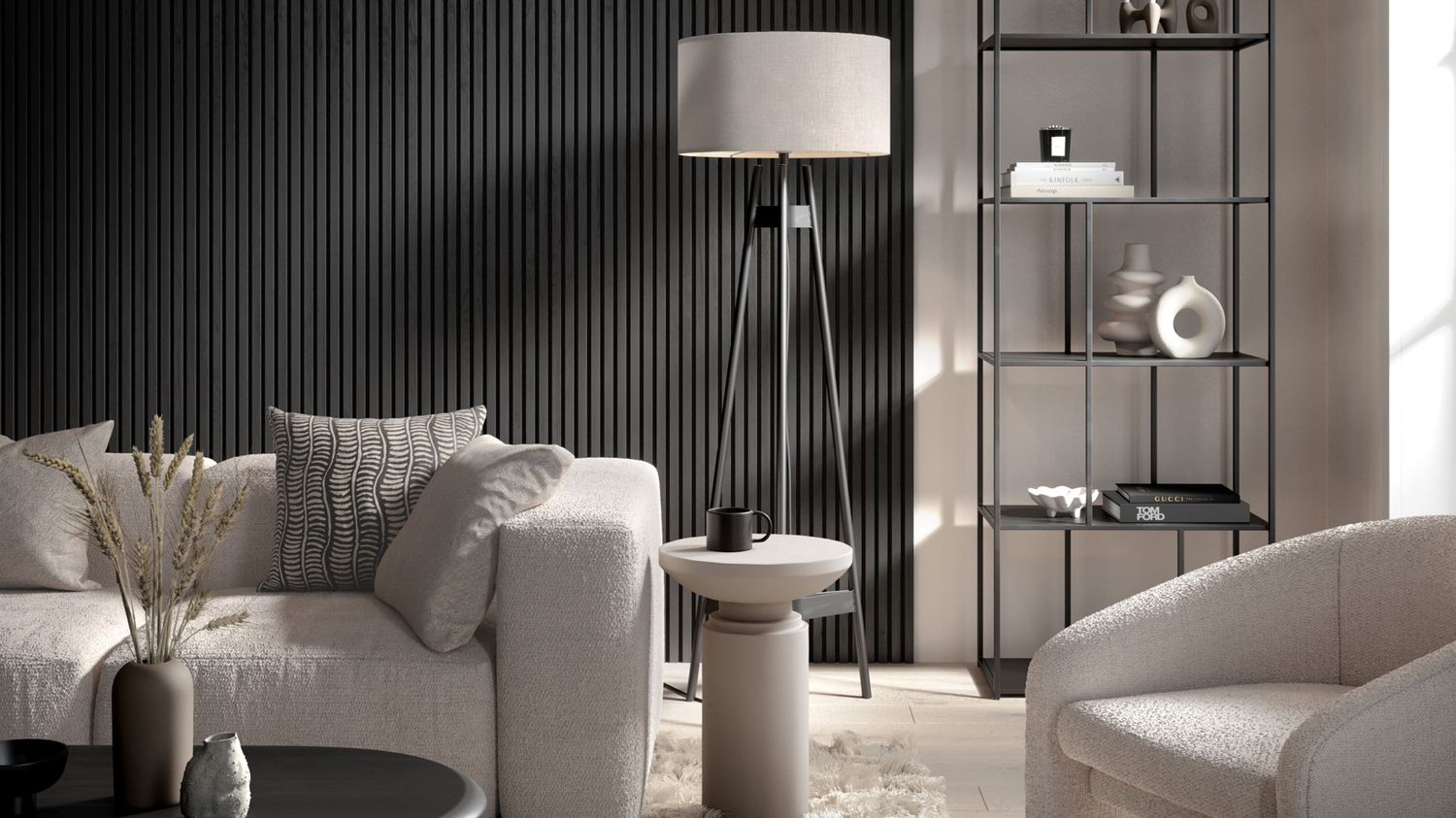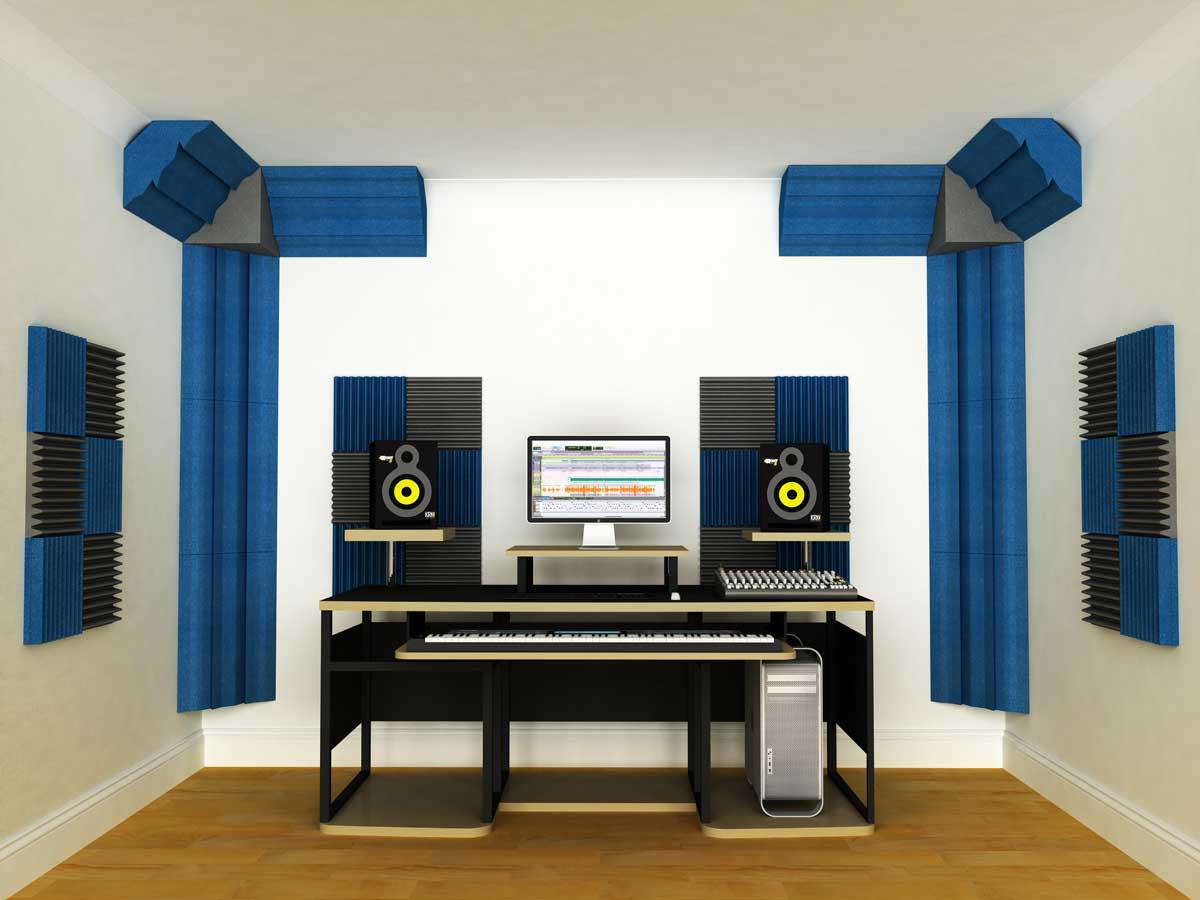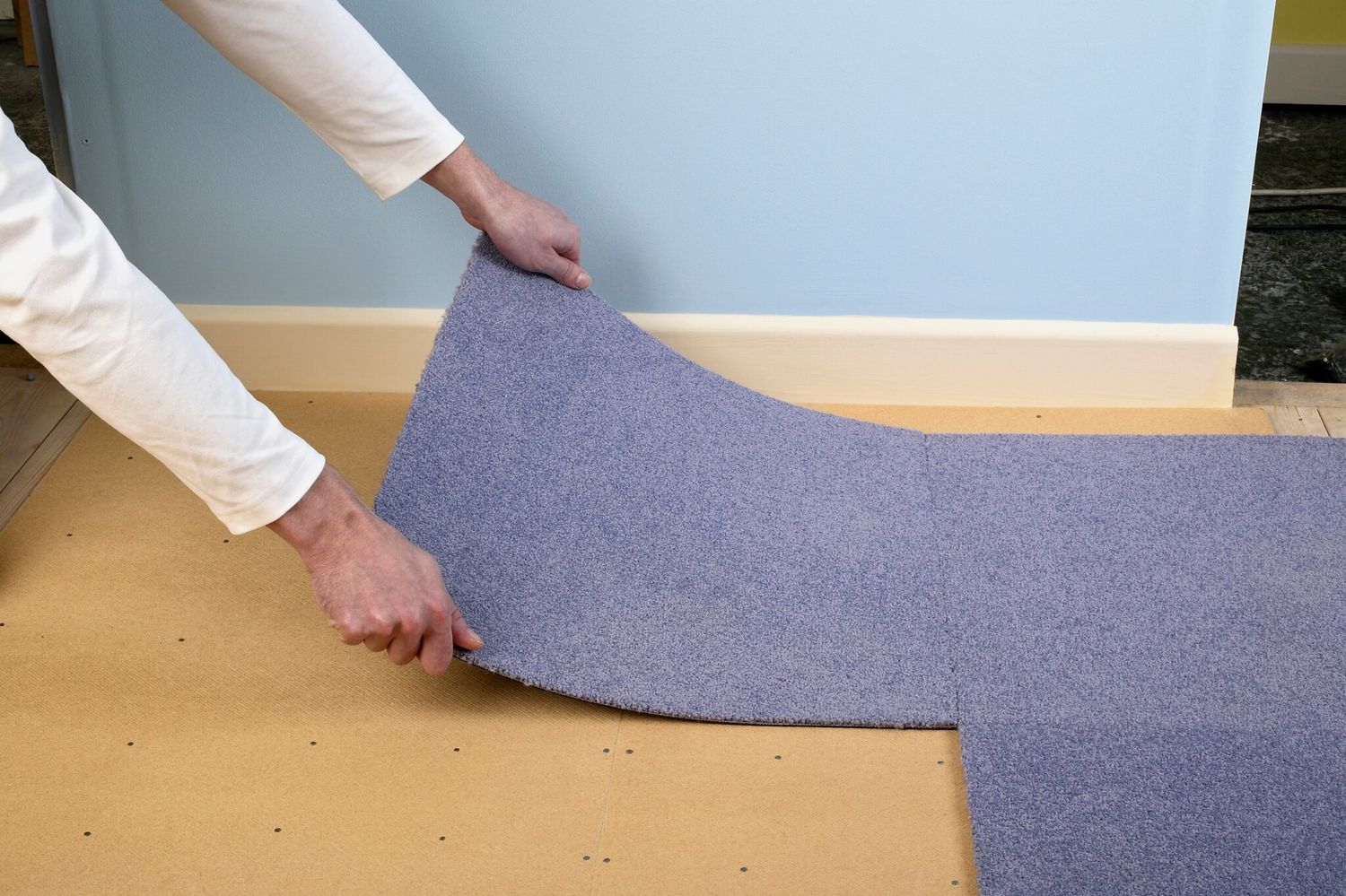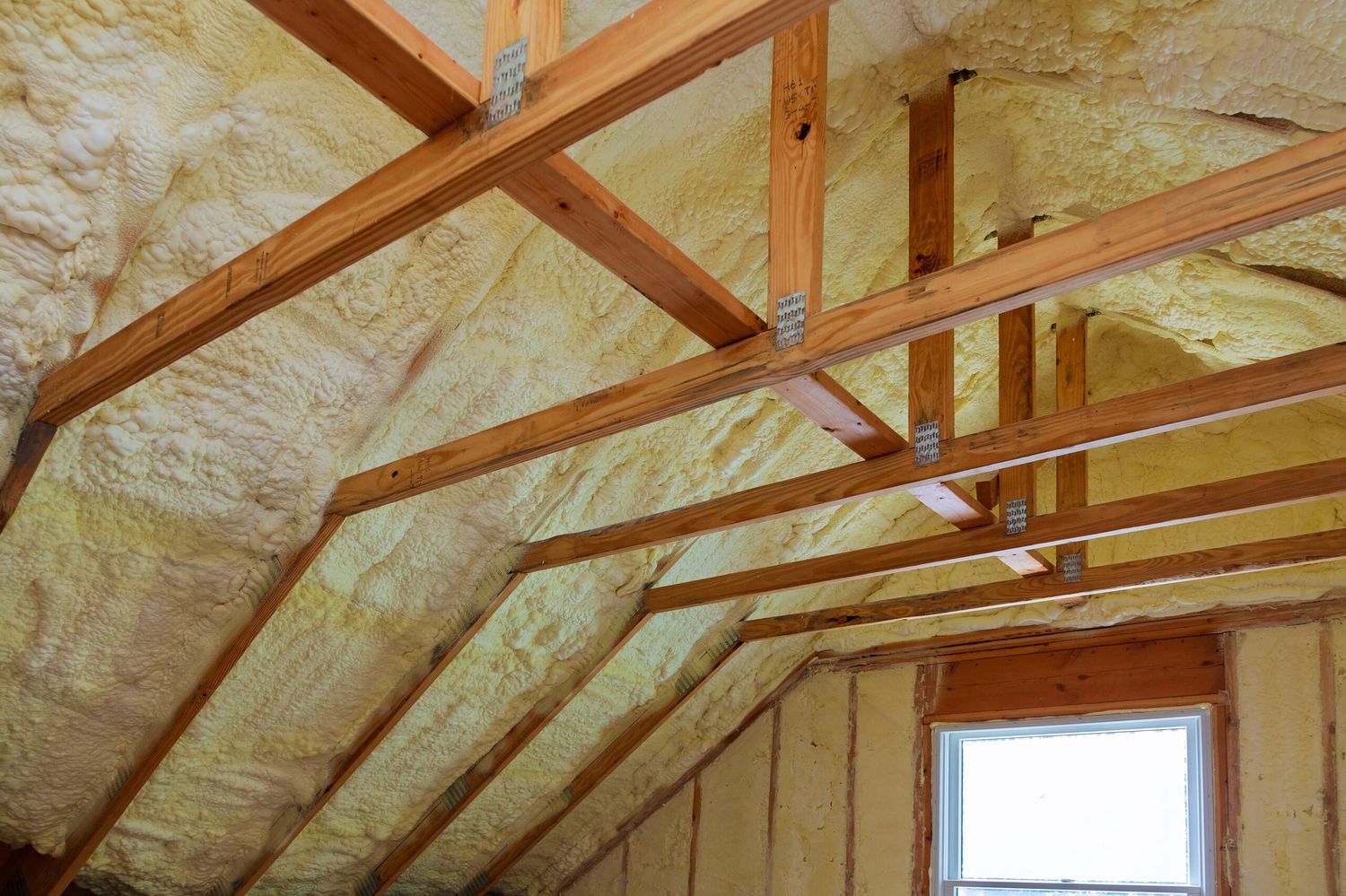Home>Production & Technology>Soundproofing>Which Board Foam Is Good For Soundproofing


Soundproofing
Which Board Foam Is Good For Soundproofing
Modified: February 18, 2024
Discover the best board foam for soundproofing and achieve optimal noise reduction. Learn about different types and find the perfect solution for your needs.
(Many of the links in this article redirect to a specific reviewed product. Your purchase of these products through affiliate links helps to generate commission for AudioLover.com, at no extra cost. Learn more)
Table of Contents
- Introduction
- Understanding Soundproofing Foam
- Types of Foam for Soundproofing
- Acoustic Foam
- Polystyrene Foam
- Polyurethane Foam
- Melamine Foam
- Factors to Consider when Choosing Soundproofing Foam
- Density
- NRC Rating
- Flexibility and Durability
- Installation and Maintenance
- Benefits of Soundproofing Foam
- Improved Sound Quality
- Reduced Noise Transmission
- Enhanced Privacy
- Increased Energy Efficiency
- Conclusion
Introduction
When it comes to creating a peaceful and quiet environment, soundproofing is essential. Whether you want to block out external noise or contain sounds within a specific area, soundproofing is the solution. One of the most effective methods of soundproofing is through the use of soundproofing foam.
Soundproofing foam, also known as acoustic foam, is specifically designed to absorb and reduce sound waves, resulting in a quieter and more comfortable space. It is commonly used in recording studios, home theaters, offices, and any other areas where noise control is necessary.
In this article, we will delve into the world of soundproofing foam and explore the different types of foam available, as well as the factors to consider when choosing the right foam for your needs. We will also discuss the benefits of using soundproofing foam in your space.
So, whether you are looking to create a serene recording studio or reduce noise in your home office, read on to discover everything you need to know about soundproofing foam.
Understanding Soundproofing Foam
Soundproofing foam is a specialized material designed to reduce the transmission of sound waves. It works by absorbing and dampening sound energy, preventing it from bouncing back into the room or transferring to neighboring areas. The foam is made up of porous cells that trap and dissipate sound vibrations, effectively reducing echoes, reverberations, and outside noise.
There are different types of soundproofing foam available, each with its own unique properties and applications. The most common types include acoustic foam, polystyrene foam, polyurethane foam, and melamine foam.
Acoustic foam: This type of foam is specifically manufactured for sound absorption. It features an open-cell structure that captures and attenuates sound waves, effectively reducing noise reflections and echoes. Acoustic foam is often used in recording studios, home theaters, and offices to create a controlled acoustic environment.
Polystyrene foam: Polystyrene foam, commonly known as Styrofoam, is a lightweight material with excellent noise-blocking properties. It is typically used as an insulation material but can also be used for soundproofing purposes. Polystyrene foam is ideal for reducing low-frequency noise and is commonly used in walls, ceilings, and floors.
Polyurethane foam: Polyurethane foam is a versatile material that is widely used for soundproofing. It has excellent sound absorption properties and can effectively reduce airborne noise. The foam is available in different densities and thicknesses, making it suitable for various applications, including walls, doors, and machinery enclosures.
Melamine foam: Melamine foam, also known as acoustic foam panels, is a lightweight and porous material that offers excellent sound absorption. It is commonly used for commercial soundproofing applications, such as conference rooms, classrooms, and offices. Melamine foam has a high fire-resistance rating and is easy to install.
Understanding the different types of soundproofing foam is crucial in determining the right material for your specific needs. Factors such as the type of noise you want to block, the desired level of sound reduction, and the installation area will help guide your decision.
Types of Foam for Soundproofing
When it comes to soundproofing foam, there are several types available, each offering different properties and benefits. Understanding the characteristics of each type will help you make an informed decision when choosing the right foam for your soundproofing needs. Let’s explore the most common types of foam used for soundproofing:
- Acoustic Foam: Also known as sound-absorbing foam or open-cell foam, acoustic foam is specifically designed to absorb sound waves and reduce echoes and reverberation. It is made up of specialized foam cells that trap and dissipate sound energy. Acoustic foam is commonly used in recording studios, home theaters, and other areas where sound quality and control are crucial.
- Polystyrene Foam: Polystyrene foam, also known as Styrofoam, is a lightweight and cost-effective insulation material. It is often used for soundproofing purposes due to its excellent noise-blocking properties. Polystyrene foam is effective at reducing low-frequency noise and is commonly used in walls, floors, and ceilings to minimize sound transmission.
- Polyurethane Foam: Polyurethane foam is a versatile material that is widely used for soundproofing. It is available in various densities and thicknesses, allowing for customization based on specific soundproofing requirements. Polyurethane foam effectively absorbs and attenuates sound waves, making it suitable for applications such as walls, doors, and machinery enclosures.
- Melamine Foam: Melamine foam, also known as acoustic foam panels or soundproof foam, is a lightweight and porous material that offers excellent sound absorption. It has a unique cellular structure that allows for the absorption of sound waves, reducing echoes and reverberations. Melamine foam is commonly used in commercial spaces, such as conference rooms, classrooms, and offices, to enhance speech clarity and reduce noise distractions.
Each type of foam has its own unique properties and applications. When choosing the right foam for your soundproofing needs, consider factors such as the type of noise you want to block, the level of sound reduction desired, and the specific area of installation. By understanding the different types of foam available, you can select the one that best suits your requirements and achieve effective soundproofing in your space.
Acoustic Foam
Acoustic foam, also known as sound-absorbing foam or open-cell foam, is a popular choice for soundproofing applications. It is specifically designed to absorb sound waves, reduce echoes, and improve sound quality in a space. Acoustic foam is commonly used in recording studios, home theaters, offices, and other areas where sound control is necessary.
Acoustic foam is made up of specialized foam cells that trap and dissipate sound energy. The foam’s unique structure allows it to effectively absorb and attenuate sound waves, reducing the likelihood of reflections and reverberations. This helps to create a more controlled and acoustically pleasing environment.
There are several benefits to using acoustic foam for soundproofing. Firstly, it improves sound quality by reducing echoes and reverberations. By absorbing excess sound energy, acoustic foam minimizes unwanted reflections that can distort the original sound source. This is particularly important in recording studios and home theaters, where high-quality sound reproduction is crucial.
Furthermore, acoustic foam helps to reduce noise transmission between rooms. By absorbing sound waves, it prevents them from traveling through walls, floors, and ceilings, thereby reducing noise leakage. This is especially beneficial in offices or shared spaces where privacy and noise control are essential.
Acoustic foam is available in a variety of shapes and designs, including foam panels, bass traps, diffusers, and foam tiles. These different forms allow for flexibility in installation and can be used depending on the specific requirements of the space.
When selecting acoustic foam, it is important to consider the foam’s density and thickness. Higher density foam provides better sound absorption capabilities, while thicker foam offers greater insulation against noise. It is also important to note that acoustic foam is most effective in reducing high-frequency sounds, so additional soundproofing measures may be required for low-frequency noise.
Overall, acoustic foam is an excellent choice for achieving soundproofing and improving sound quality in various environments. Its ability to absorb sound waves, reduce echoes, and enhance privacy makes it a valuable addition to recording studios, home theaters, offices, and other spaces where noise control is essential.
Polystyrene Foam
Polystyrene foam, commonly known as Styrofoam, is a lightweight and cost-effective material that is widely used for insulation purposes. However, it is also an excellent option for soundproofing applications. Polystyrene foam is known for its impressive noise-blocking properties, making it an effective solution for reducing sound transmission.
When used for soundproofing, polystyrene foam serves as a barrier against noise by absorbing and blocking sound waves. Its cellular structure helps to break up sound vibrations and prevent them from passing through walls, floors, and ceilings. This makes it particularly useful in reducing low-frequency noise, such as traffic noise or HVAC system sounds.
One of the advantages of polystyrene foam is its lightweight nature, which makes it easy to handle and install. This foam can be easily cut into desired shapes and sizes, enabling it to fit snugly in the desired areas. It is commonly used in walls, floors, and ceilings to minimize sound transmission between rooms or to create a soundproof enclosure for specific equipment.
Polystyrene foam is also known for its thermal insulation properties, which can provide an additional benefit in soundproofing applications. By reducing the transfer of both heat and sound, it helps to create a more comfortable and energy-efficient environment.
It is important to note that polystyrene foam is most effective in blocking airborne sound rather than impact noise. To achieve optimal soundproofing results, it is recommended to combine polystyrene foam with other soundproofing materials, such as acoustic baffles or mass-loaded vinyl, especially in areas where impact noise (such as footsteps or furniture moving) is a concern.
One crucial consideration when using polystyrene foam for soundproofing is ensuring proper installation and sealing to minimize any air gaps. This will help to maximize its soundproofing capabilities. Additionally, it is essential to follow local building codes and regulations when using polystyrene foam for soundproofing purposes.
In summary, polystyrene foam is a lightweight and cost-effective option for soundproofing. Its ability to absorb and block sound waves makes it ideal for reducing noise transmission in walls, floors, and ceilings. By incorporating polystyrene foam into your soundproofing strategy, you can create a quieter and more comfortable environment.
Polyurethane Foam
Polyurethane foam is a versatile material widely used for soundproofing due to its excellent sound absorption properties. This type of foam is known for its ability to reduce airborne noise and improve sound quality in various applications.
Polyurethane foam is available in different densities and thicknesses, providing flexibility and customization options for soundproofing needs. The foam’s structure consists of open cells that trap and absorb sound waves, preventing their reflection and reducing the overall noise level in the space.
One of the key advantages of polyurethane foam is its high sound absorption coefficient, which allows it to effectively attenuate a wide range of frequencies. This makes it suitable for both high and low-frequency sound control. Polyurethane foam can be used in different areas, such as walls, doors, and machinery enclosures, to minimize noise transmission.
Another benefit of polyurethane foam is its durability and flexibility. It can withstand wear and tear over time and maintain its soundproofing properties. Additionally, polyurethane foam is resistant to moisture, making it suitable for use in environments prone to humidity or moisture exposure.
When it comes to installation, polyurethane foam is relatively easy to work with. It can be cut to size and shape to fit specific areas, allowing for a precise and secure fit. It can also be adhered to various surfaces using adhesive or installed as panels.
It is worth noting that while polyurethane foam is effective in absorbing airborne sound, it may not provide sufficient soundproofing for impact noise. Additional measures, such as combining it with other soundproofing materials like mass-loaded vinyl or using resilient underlayments, may be necessary to address impact noise issues.
Overall, polyurethane foam is a versatile and effective option for soundproofing. Its excellent sound absorption properties, durability, and flexibility make it suitable for a wide range of applications. Whether you need to improve sound quality in a home theater or reduce noise in a commercial space, polyurethane foam can help create a quieter and more comfortable environment.
Melamine Foam
Melamine foam, also known as acoustic foam panels or soundproof foam, is a lightweight and porous material that is highly effective in soundproofing applications. It offers excellent sound absorption capabilities, making it a popular choice for commercial and residential spaces.
One of the key features of melamine foam is its unique cellular structure, which allows for the absorption of sound waves. When sound waves enter the foam, they get trapped within the foam’s open-cell structure, converting the sound energy into heat. This results in reduced echoes, reverberations, and overall noise levels in the room.
Melamine foam is commonly used in areas that require improved speech intelligibility and reduced noise distractions. It is widely used in conference rooms, classrooms, offices, and other commercial spaces. The foam’s ability to absorb and dampen sound waves helps to create a more focused and productive environment.
In addition to its sound absorption properties, melamine foam is also highly fire-resistant. It has a high fire rating, making it a safe choice for soundproofing applications. This is especially important in public spaces where fire safety regulations must be adhered to.
Installation of melamine foam is relatively straightforward. It can be mounted on walls, ceilings, or used as freestanding acoustic panels. Melamine foam panels are available in various sizes and shapes, allowing for customization and creative placement in different environments.
While melamine foam is effective in reducing airborne noise, it may not provide sufficient soundproofing for impact noise, such as footsteps or furniture moving. Therefore, additional measures may be required, such as using carpeting, rugs, or resilient underlayments to address impact noise issues.
It’s important to note that melamine foam should be used in accordance with local building regulations and codes. Proper installation and adherence to safety guidelines ensure the foam’s effectiveness and longevity.
In summary, melamine foam is an excellent choice for soundproofing applications. Its ability to absorb sound waves, its fire-resistant properties, and its versatility in installation make it a valuable investment for achieving optimal sound control and improving the acoustic environment in various settings.
Factors to Consider when Choosing Soundproofing Foam
When selecting soundproofing foam, it’s important to consider various factors to ensure you choose the right foam for your specific needs and requirements. Here are some key factors to keep in mind:
- Density: The density of the foam determines its sound-absorbing capabilities. Higher density foam tends to absorb more sound energy and is more effective at reducing noise. However, it’s important to strike a balance as extremely high-density foam can make the room overly dead and dull.
- NRC Rating: The Noise Reduction Coefficient (NRC) is a measure of how effectively the foam absorbs sound across a range of frequencies. A higher NRC rating indicates better sound absorption. Consider the NRC rating of the foam to ensure it meets your desired level of soundproofing.
- Flexibility and Durability: Depending on the application, it’s important to select foam that is flexible and durable. Foam that retains its shape and resilience over time will provide long-lasting soundproofing benefits. Flexibility is especially crucial for foam that needs to be contoured or fitted into irregular spaces.
- Installation and Maintenance: Consider the ease of installation and maintenance when choosing soundproofing foam. Some foam may require adhesive for installation, while others may have self-adhesive backing or simply need to be placed in position. Additionally, consider the ease of cleaning or replacing the foam if necessary.
It’s also worth mentioning that different types of foam have their own unique characteristics and benefits. Acoustic foam is ideal for sound absorption and reducing echoes, while polystyrene foam is effective for blocking airborne noise. Polyurethane foam offers versatility and customization options, while melamine foam excels in high-frequency sound absorption.
Ultimately, the choice of soundproofing foam will depend on the specific requirements of your space, budget considerations, and noise reduction goals. By considering factors such as density, NRC rating, flexibility, durability, installation, and maintenance, you can select the right foam to create a quieter and more comfortable environment.
Density
The density of the soundproofing foam is an important factor to consider when choosing the right material for your soundproofing needs. It refers to the weight of the foam per unit of volume and plays a crucial role in its sound-absorbing capabilities.
A higher density foam generally indicates a higher quality and more effective soundproofing material. It is denser, which means it has more mass per unit area. This increased mass allows the foam to absorb and dissipate sound energy more effectively, resulting in better noise reduction.
When sound waves travel through air and reach the foam, the denser material causes the sound waves to slow down and lose energy. This absorption of sound energy helps to prevent the sound waves from bouncing back into the room or transmitting through walls, floors, and ceilings to other areas.
However, it’s important to strike a balance with density, as extremely high-density foam can have drawbacks. Too much density can make the foam overly rigid and reduce its flexibility, limiting its ability to conform to irregular surfaces or being shaped for specific installations. Additionally, extremely dense foam may make the room overly dead and dull, affecting the overall acoustics.
On the other hand, foam with low density may not provide sufficient soundproofing capabilities, as it may not effectively absorb enough sound energy. This can result in reduced noise reduction and less effective sound control in the space.
The appropriate density of soundproofing foam will depend on the specific requirements of your space and the level of soundproofing you desire. It’s essential to consider factors such as the type of noise you want to block or reduce, the location of the installation, and the desired level of sound absorption.
Ultimately, finding the right balance of density is crucial to achieving optimal soundproofing results. It’s advisable to consult with soundproofing experts or professionals who can provide guidance on the ideal density for your specific application. By selecting the appropriate density, you can effectively minimize noise transmission and create a quieter and more comfortable environment.
NRC Rating
The Noise Reduction Coefficient (NRC) is an essential factor to consider when choosing soundproofing foam. The NRC rating indicates the effectiveness of the foam in absorbing sound across a range of frequencies. Understanding the NRC rating helps determine how well the foam can reduce noise and improve the overall acoustic environment.
The NRC rating is expressed as a decimal between 0 and 1 or as a percentage between 0% and 100%. A higher NRC rating indicates better sound absorption capabilities. For example, an NRC rating of 0.8 or 80% means that the foam absorbs 80% of the sound energy that strikes it, while reflecting only 20% back into the room.
The NRC rating takes into account the average sound absorption performance across different frequencies. It considers how well the foam absorbs high, mid, and low frequencies, making it a reliable indicator of the overall sound absorption capabilities of the foam.
When considering the NRC rating, it’s important to match the foam’s sound absorption capabilities with the specific needs of your space. For example, if you’re soundproofing a music studio or home theater where high-frequency sound is prevalent, foam with a higher NRC rating may be more suitable. In contrast, if you’re mainly concerned with reducing low-frequency noise, it may be beneficial to consider additional soundproofing materials or techniques.
It’s worth noting that the NRC rating does not indicate how well the foam blocks sound or provides sound isolation. It primarily focuses on sound absorption. So, while foam with a high NRC rating is effective in reducing echoes and reverberations within a room, it may not necessarily prevent noise from transmitting through walls, floors, or ceilings.
Understanding the NRC rating of soundproofing foam enables you to make an informed decision when selecting the foam for specific applications. It helps you assess the foam’s ability to absorb sound energy and improve the overall acoustic quality of the space. The right NRC rating will depend on the specific noise control requirements and priorities for your project.
Consulting with professionals who specialize in soundproofing can provide valuable guidance in selecting the foam with the appropriate NRC rating for your specific needs. By considering the NRC rating, you can choose the right soundproofing foam to create a quieter and more acoustically pleasing environment.
Flexibility and Durability
When choosing soundproofing foam, it is important to consider its flexibility and durability. These factors not only impact the ease of installation but also determine the longevity and effectiveness of the foam in soundproofing applications.
Flexibility: Soundproofing foam that offers flexibility can be advantageous, particularly when dealing with irregular surfaces or complex installations. Flexible foam can easily conform to different shapes and contours, allowing for a seamless fit in various areas. This flexibility ensures that the foam covers the desired surfaces effectively, minimizing the risk of sound leakage and improving overall soundproofing efficiency. Additionally, flexible foam can be cut or shaped to accommodate specific requirements or to fit around obstacles, making it more adaptable to different environments.
Durability: The durability of soundproofing foam is crucial in ensuring its long-term effectiveness. Foam that is durable and resistant to wear and tear will retain its soundproofing properties over time, providing consistent noise reduction. Durability is especially important in high-traffic areas or environments where the foam may be exposed to frequent impact or damage. Furthermore, foam that is resistant to moisture and humidity can withstand harsh conditions without deteriorating or losing its soundproofing capabilities. Long-lasting and durable foam reduces the need for frequent replacement or maintenance, saving time and costs in the long run.
When assessing the flexibility and durability of soundproofing foam, it is recommended to consider the foam’s composition, such as its cellular structure and material properties. Foam with an open-cell structure often provides better flexibility while maintaining its sound-absorbing qualities. Additionally, paying attention to the foam’s manufacturer information regarding its durability and resistance to environmental factors can help make an informed decision.
In applications where flexibility is a significant factor, such as shaping foam around corners or contoured surfaces, foams like polyurethane foam or fiber-based acoustic panels are typically more flexible and versatile. These foams can easily adapt to different installation scenarios while maintaining their soundproofing effectiveness.
Ultimately, finding the right balance between flexibility and durability is essential for long-lasting and effective soundproofing. Evaluating these characteristics will help select the appropriate foam that can meet specific installation requirements, enhance soundproofing performance, and contribute to creating a quieter and more comfortable environment.
Installation and Maintenance
Considering the installation and maintenance aspects of soundproofing foam is crucial to ensure its effectiveness in reducing noise and to minimize any potential issues that may arise. Taking these factors into account will help streamline the installation process and ensure the long-term performance of the foam.
Installation: The ease of installation can significantly impact the overall soundproofing project. Some foam options come with self-adhesive backing, making them easy to install by simply peeling off the backing and sticking them onto the desired surfaces. Other foams may require the use of adhesives or mounting hardware, requiring more complex installation methods. It is important to carefully follow the manufacturer’s instructions for installation to ensure the foam is applied correctly and securely. Additionally, considering the specific requirements of your project, such as the surface material, room layout, and accessibility, will aid in selecting the most suitable foam for a hassle-free installation.
Maintenance: Regular maintenance helps preserve the effectiveness and aesthetics of soundproofing foam over time. While foam itself does not require extensive maintenance, it is important to keep it clean to prevent the buildup of dust, dirt, or other particles that can affect its performance. Depending on the type of foam, maintenance can involve simple cleaning with a soft brush or vacuuming to remove any accumulated debris. It is important to check the manufacturer’s recommendations for maintenance to ensure proper care that does not damage or compromise the foam’s soundproofing properties. Regular inspections should also be conducted to identify any signs of wear or damage, such as tears or deterioration, and to promptly address any issues to maintain the foam’s functionality.
Considering the installation and maintenance requirements of soundproofing foam is essential in determining how feasible and practical it is for your specific project. Understanding the installation process and maintaining the foam correctly will extend its lifespan and ensure its long-term performance in reducing noise transmission effectively.
When choosing soundproofing foam, it is beneficial to consult with professionals or experts who can provide guidance on the best installation practices and maintenance routines. Their expertise will help you select the appropriate foam for your specific needs and ensure its optimal performance for years to come.
Benefits of Soundproofing Foam
Soundproofing foam offers numerous advantages and benefits when it comes to creating a quieter and more comfortable environment. Whether you’re dealing with external noise or trying to contain sound within a specific area, soundproofing foam can significantly enhance the overall acoustic quality of a space. Here are some key benefits of using soundproofing foam:
- Improved Sound Quality: One of the primary benefits of soundproofing foam is its ability to absorb and dampen sound waves. By reducing echoes, reverberations, and unwanted reflections, soundproofing foam improves the overall sound quality in a room. This is especially advantageous in areas where accurate sound reproduction is crucial, such as recording studios, home theaters, or auditoriums.
- Reduced Noise Transmission: Soundproofing foam helps to minimize the transmission of noise between rooms and from external sources. By absorbing sound energy and preventing it from bouncing back or passing through walls, floors, and ceilings, the foam effectively reduces the amount of noise that enters or exits a space. This benefit is particularly valuable in shared living spaces, offices, or commercial environments where privacy and noise control are essential.
- Enhanced Privacy: Soundproofing foam enhances privacy by creating a barrier against sound. It helps to prevent conversations, music, or other noises from being heard outside of a room, providing a greater sense of confidentiality and personal space. This is particularly beneficial in offices, medical facilities, or conference rooms, where privacy and confidentiality are paramount.
- Increased Energy Efficiency: Along with its sound-absorbing properties, soundproofing foam also provides thermal insulation benefits. It helps to reduce heat loss or gain through walls and ceilings, improving energy efficiency in a space. By reducing the need for excessive heating or cooling, soundproofing foam can contribute to energy savings and lower utility bills.
These benefits demonstrate the wide-ranging advantages of soundproofing foam in various settings. Whether you’re aiming to create a more peaceful and productive workspace, a serene recording studio, or a cozy home theater, soundproofing foam can play a vital role in enhancing the overall acoustic experience while ensuring privacy and reducing noise disturbance.
Improved Sound Quality
One of the primary benefits of soundproofing foam is its ability to significantly improve the sound quality in a space. Soundproofing foam is specifically designed to absorb and dampen sound waves, reducing echoes, reverberations, and unwanted reflections. This results in a more controlled and balanced acoustical environment.
In recording studios, soundproofing foam is a crucial component for achieving accurate sound reproduction. It helps to create a controlled acoustic space by minimizing echoes and reverberations that can interfere with the clarity and accuracy of recorded sounds. By reducing these audio artifacts, soundproofing foam ensures that the recorded sound is faithful to the original source, enhancing the overall production quality.
Similarly, in home theaters or entertainment rooms, soundproofing foam plays a vital role in optimizing sound performance. By absorbing sound waves, it minimizes the impact of reflections that can distort the audio, ensuring a more immersive and enjoyable viewing or listening experience. Whether it’s for movies, music, or gaming, soundproofing foam helps to create a true-to-life soundstage with enhanced clarity and depth.
This improvement in sound quality extends beyond recording studios and home theaters. Soundproofing foam can be used in offices, conference rooms, classrooms, or any space where clear communication is essential. It reduces the reflections and echoes, allowing for better speech intelligibility and reducing listener fatigue. This creates a more pleasant and productive environment for meetings, lectures, or presentations.
Furthermore, soundproofing foam can also enhance the sound quality in commercial venues such as restaurants, cafes, and music venues. By reducing excessive echoes and reverberations, it ensures that the music or performances are heard with greater clarity and impact, providing a more enjoyable experience for patrons.
Overall, the improved sound quality achieved through soundproofing foam results in a more immersive, enjoyable, and accurate sound experience. Whether in professional recording environments, entertainment spaces, or various other settings, the foam’s ability to minimize unwanted echoes and reflections enhances the overall acoustic quality, creating a more engaging and satisfying audio experience.
Reduced Noise Transmission
Another significant benefit of soundproofing foam is its ability to minimize the transmission of noise between rooms or from external sources. By absorbing sound energy and preventing it from bouncing back or passing through walls, floors, and ceilings, soundproofing foam effectively reduces the amount of noise that enters or exits a space.
In residential settings, soundproofing foam helps to create a peaceful and quiet environment by blocking external noise sources. Whether you live in a busy urban area with traffic noise, near an airport, or in close proximity to noisy neighbors, soundproofing foam can provide relief by reducing the impact of these external disturbances. It effectively acts as a barrier, preventing the ingress of sound waves and maintaining a more tranquil atmosphere inside the living space.
Similarly, in commercial settings, soundproofing foam plays a crucial role in maintaining productive work environments. By minimizing noise transmission between offices, cubicles, or open plan areas, it helps to create a more focused and concentrated workspace. This reduces distractions and improves concentration, resulting in enhanced productivity and employee satisfaction.
Soundproofing foam is particularly beneficial in shared or multifunctional spaces. For instance, in apartment buildings or condominiums, soundproofing foam installed in walls, floors, or ceilings significantly minimizes noise transfer between units, enhancing privacy and comfort for all residents. In educational institutions, soundproofing foam decreases noise intrusion between classrooms and common areas, creating a more conducive learning environment.
In addition to reducing noise transmission within a space, soundproofing foam also helps to prevent sound leakage to the outside environment. This is especially valuable in spaces such as music studios, where sound must be contained within the room to avoid disturbing neighboring areas. Soundproofing foam ensures that music, vocals, or other sound sources are confined to the desired space, without spilling over and causing disruptions.
Overall, soundproofing foam’s ability to reduce noise transmission provides a quieter and more comfortable environment, whether it’s in residential, commercial, or educational settings. By creating a sound barrier, the foam improves the quality of life for occupants, enhances productivity, and ensures good neighborly relations, contributing to a more harmonious and enjoyable overall experience.
Enhanced Privacy
Soundproofing foam plays a significant role in enhancing privacy by creating a barrier against sound. It effectively reduces the transmission of conversations, music, or other noises, ensuring confidential conversations remain private and preventing disturbances from reaching neighboring areas.
In office settings, soundproofing foam helps maintain confidentiality during meetings and sensitive discussions. By absorbing sound waves, it prevents them from traveling through walls or doorways, offering a level of privacy that is crucial for confidential client conversations or employee meetings. Employees can engage in discussions without fear of being overheard, creating a more secure and productive work environment.
Soundproofing foam is also advantageous in medical facilities, such as hospitals or clinics. It reduces noise transmission between patient rooms, ensuring a peaceful and confidential environment where patients can rest and recover without being disturbed by conversations or medical equipment noises. Enhanced privacy in healthcare facilities contributes to patient satisfaction and comfort.
In educational institutions, soundproofing foam is particularly beneficial in classrooms, lecture halls, or libraries. By minimizing noise transmission, it creates a more focused learning environment where students can concentrate on their studies without distractions. It helps prevent disruptions from adjacent classrooms or common areas, promoting a quiet and conducive atmosphere for learning.
In residential settings, soundproofing foam enhances privacy in shared living spaces. By reducing noise transmission between units or rooms, it ensures a sense of tranquility and privacy for residents. Whether it’s shared walls in apartments or adjoining rooms in houses, soundproofing foam helps create boundaries and enables individuals to enjoy their personal space without disturbances from neighboring areas.
In hospitality settings, such as hotels or resorts, soundproofing foam contributes to a peaceful and restful experience for guests. By reducing noise transmission between rooms or from corridors, it ensures privacy and prevents disruptions, enabling guests to relax and have a rejuvenating stay.
Overall, soundproofing foam is an effective solution for enhancing privacy in various settings. By minimizing noise transmission and creating a sound barrier, it allows for confidential conversations, maintains a peaceful environment, and ensures individuals can enjoy their personal space without disturbances. The increased privacy provided by soundproofing foam contributes to overall comfort and satisfaction in both professional and personal settings.
Increased Energy Efficiency
Soundproofing foam not only improves the acoustic environment but also contributes to increased energy efficiency in a space. By reducing noise and sound transmission, soundproofing foam helps to minimize the need for excessive heating, cooling, and energy consumption.
One way soundproofing foam enhances energy efficiency is through its thermal insulation properties. The foam acts as an additional layer of insulation, reducing heat loss or gain through walls, floors, and ceilings. This added insulation helps to stabilize indoor temperatures, making it easier to maintain a comfortable environment without over-reliance on heating or cooling systems. As a result, energy consumption is reduced, leading to potential cost savings on heating and cooling bills.
Moreover, soundproofing foam reduces the need for high-powered fans or air conditioning units to compensate for external noises. By minimizing noise infiltration, the foam allows for a quieter indoor environment, reducing the need for the constant use of cooling or ventilation systems. This reduction in energy consumption contributes to a more sustainable and eco-friendly space.
In addition to saving energy and reducing utility costs, increased energy efficiency has a positive impact on the environment. By using soundproofing foam to enhance energy efficiency, the overall carbon footprint of a building or space is reduced. This aligns with sustainability goals and promotes responsible resource management.
The benefits of increased energy efficiency extend beyond financial savings and environmental impact. Maintaining consistent indoor temperatures and reducing the need for excessive heating or cooling also enhances overall comfort and improves occupant well-being. A comfortable and energy-efficient space creates a more pleasant and enjoyable environment for work, study, relaxation, or other activities.
It’s important to note that while soundproofing foam contributes to energy efficiency through adding insulation and reducing the need for constant heating or cooling, it should be used in conjunction with other energy-saving measures. Proper insulation of walls, windows, and doors, along with energy-efficient appliances and lighting, can further optimize the overall energy performance of a space.
In summary, soundproofing foam’s role in increasing energy efficiency is a valuable benefit in creating a sustainable and cost-effective environment. By providing additional insulation and reducing the need for excessive heating or cooling, soundproofing foam contributes to energy savings, financial benefits, and a more comfortable indoor space.
Conclusion
Soundproofing foam is a valuable tool for creating a quieter, more comfortable, and acoustically pleasing environment. Whether you’re aiming to enhance sound quality in a recording studio, reduce noise transmission in an office, or create a peaceful atmosphere in your home, soundproofing foam offers numerous benefits.
By absorbing and dampening sound waves, soundproofing foam improves sound quality, reducing echoes, reverberations, and unwanted reflections. This is particularly important in spaces where accurate audio reproduction is essential, such as recording studios, home theaters, and conference rooms.
In addition to improving sound quality, soundproofing foam reduces noise transmission between rooms and from external sources. It acts as a barrier, preventing sound from traveling through walls, floors, and ceilings, ensuring a quieter and more focused environment. This is advantageous in both residential and commercial settings, promoting privacy, concentration, and productivity.
Soundproofing foam also enhances privacy by creating a barrier against sound. It provides a sense of confidentiality and personal space in offices, medical facilities, and residential settings, allowing for confidential conversations and undisturbed rest.
Furthermore, soundproofing foam contributes to increased energy efficiency by providing additional insulation and reducing the need for excessive heating or cooling. This not only saves energy and lowers utility costs but also promotes sustainability and a more comfortable indoor environment.
In conclusion, soundproofing foam offers a wide range of benefits, from improved sound quality to reduced noise transmission, enhanced privacy, and increased energy efficiency. When selecting soundproofing foam, consider factors such as density, NRC rating, flexibility, durability, ease of installation, and maintenance. By choosing the appropriate foam for your specific needs, you can create a quieter, more enjoyable, and productive space for work, leisure, or relaxation.










